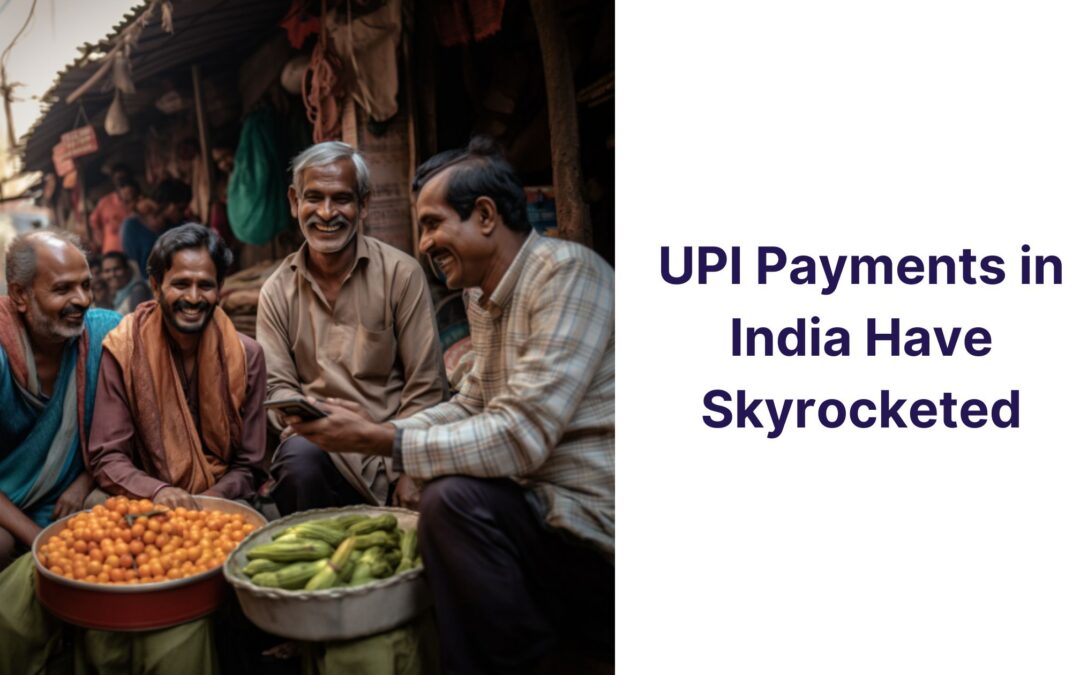In recent years, UPI Payments In India have experienced an unprecedented ascent, almost completely rewriting the rules of financial transactions. UPI transactions have surged exponentially. It has clocked a staggering 2.5 billion transactions in August 2021, a testament to the nation’s appetite for digital payments.
UPI transaction volume increased from 374.63 crore in 2018 to 7,403.97 crore in 2022, an increase of 1,876%. These numbers not only showcase the growing popularity of UPI but also underscore the swift adoption of cashless transactions by millions of Indians.
By the Numbers
According to the National Payments Corporation of India (NPCI), the custodian of UPI, the platform has witnessed a 16-fold growth in transaction volumes in just two years, from 150 million in August 2019 to 2.5 billion in August 2021. This astonishing growth is akin to a financial revolution, fundamentally altering how people transact.
The Smartphone Revolution
The widespread adoption of smartphones has catalyzed UPI’s rise, with over 50% of India’s population owning one, providing easy access to digital payment platforms.
Mobile phones have become the gateway to financial inclusion, enabling people from all walks of life to participate in the digital economy. This shift is not just a technological advancement; it’s a societal transformation.
UPI Payments In India: A Game-Changer for the country’s Financial Landscape
The meteoric rise of UPI payments isn’t just a statistical anomaly; it’s a revolution reshaping India’s financial ecosystem.
Financial Inclusion at Its Finest:
UPI has bridged the gap between urban and rural India, enabling even those in remote areas to access and participate in the digital economy. This newfound financial inclusion breaks down economic barriers and empowers millions previously excluded from formal banking systems.
The (Almost) Death of Cash
As UPI gains momentum, the use of cash is dwindling. From street vendors to top-tier businesses, UPI Payments In India are becoming the preferred mode of transaction, diminishing the reliance on physical currency.
This shift enhances convenience and aids in curbing black money and tax evasion, a significant step towards a more transparent financial system.
UPI Payments In India – A Thriving Fintech Ecosystem
The UPI boom has sparked a vibrant fintech ecosystem in India, with numerous startups innovating in the payment space, creating jobs, and attracting investment. This burgeoning sector is transforming the financial industry and contributing to India’s economic growth and innovation on a global scale. It’s a testament to the entrepreneurial spirit that thrives in the country.
Challenges and Opportunities
As Indians continue their love affair with UPI payments, challenges and opportunities emerge.
Security Concerns?
While UPI offers convenience, the surge in digital transactions has also attracted cybercriminals. It is vital to maintain robust security measures to protect users. The relentless pursuit of enhanced security protocols will be crucial in sustaining the trust that UPI has gained.
Savings and Investment Using UPI
Digital wallets have become increasingly popular. This encourages Indians to save and invest their funds through these platforms can create financial literacy and wealth. UPI can evolve from just a transactional tool into a comprehensive financial ecosystem promoting responsible financial management.
UPI Payments In India: Global Potential
UPI’s success within India sets the stage for international expansion. Collaborations with global financial networks could open doors to new horizons.
This could facilitate international transactions and strengthen India’s position in the worldwide fintech landscape. As a result, India might potentially become a hub for digital financial innovation.
Takeaways!
UPI has unleashed a digital payments revolution in a country where queues at banks and cash shortages were once the norm. This has helped rewrite the financial narrative. Indians continue to embrace this transformative technology. The world watches in awe, witnessing a nation’s journey toward a cashless future.
The rise of UPI payments is not just a financial story. It’s a testament to India’s resilience, adaptability, and the unstoppable force of progress in the digital age.
FAQs
Why is UPI rising?
UPI (Unified Payments Interface) is on the rise due to its convenience, speed, and security. It simplifies digital transactions by allowing users to send and receive money with just a few clicks on their smartphones. Additionally, the government’s push towards a cashless economy and increasing UPI-compatible apps have contributed to its rapid adoption.
What is the growth in UPI transactions in India?
UPI transactions in India have witnessed remarkable growth. As of my last update in September 2021, the National Payments Corporation of India (NPCI) reported a staggering increase in UPI transactions year-over-year. However, please refer to the latest reports from NPCI or relevant financial authorities for the most current statistics.
Has UPI limit increased?
Yes, over the years, the UPI transaction limits have been periodically increased to facilitate larger digital transactions. The specific limits may vary depending on the bank and type of account. As of my last knowledge update, the limit for a single UPI transaction was set at Rs. 1 lakh. To get the most accurate and up-to-date information on UPI limits, it’s advisable to check with your bank or visit the official NPCI website.
Why are digital payments increasing in India?
Digital payments are on the rise in India due to several key factors. Firstly, the government’s initiatives such as demonetization and the “Digital India” campaign have promoted cashless transactions. Secondly, the proliferation of smartphones and internet access has made digital payments more accessible to a larger population. Moreover, the convenience, security, and various incentives offered by digital payment platforms have encouraged people to shift from traditional cash transactions to digital modes. Finally, the COVID-19 pandemic further accelerated the adoption of digital payments as people sought contactless alternatives for their safety.

